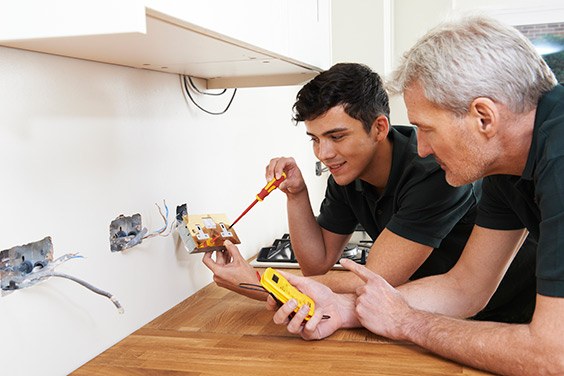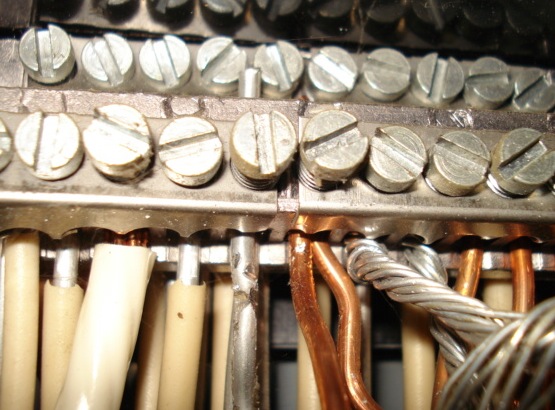
Each year, between 45,000 and 55,000 house fires occur in the United States due to faulty electrical work or old wiring. Today’s homeowner puts much more demands on the home’s electrical systems than was anticipated when they were created. If you’re using computer systems, gaming systems, large appliance, and even “smart home” components on a system that’s designed for much less, your home’s safety is at risk. This is just one of the many reasons you may need to update your home’s electrical system. Knowing when to replace electrical wiring is important as a homeowner, because your family’s safety is at risk.
Have old electrical wiring that needs to be updated? Call Kolb Electric to get started with our rewiring services.
When To Replace Electrical Wiring in Your Home

The safety of your home and your family should always be a top priority. Old electrical wiring can pose serious safety risks, including electrical fires, electrocution, and damage to your appliances and electronics. To avoid these risks, keep in mind the following key signs that suggest it might be time to replace your electrical wiring for safety reasons:
- Age of wiring: Wires weren’t made to last forever, and they will wear down over time. If you live in older home that was built many years ago, you should check to see if your property has ever been rewired. If it hasn’t been for many decades, it’s time to consider installing new wires.
- Frequency of electrical issues: If your home’s wiring is constantly causing problems, such as frequently tripped circuits, blown fuses, or flickering lights, then you need to have the wiring replaced.
- Overloaded circuits: We rely on electricity more than ever before, so our modern power demands are often not compatible with older wiring. Modern homes have far more electrical demands than those built in the past. If you rely on power strips and extension cords extensively, it’s a sign that your wiring may not be able to handle the load.
- Damaged insulation: Wiring with damaged or deteriorating insulation is a severe safety hazard, as exposed wires can lead to electrical shocks and fires.
- Burning odor: A burning odor coming from your electrical outlets or wiring is a clear sign of trouble. If you notice this, turn off the power to that circuit and seek professional assistance right away.
- Sparking outlets: If you see sparks anytime you plug or unplug something from an outlet, then this points to issues with your home’s wiring.
If you’re noticing these problems, you need to update your home’s electrical wiring with the help of a qualified electrical contractor, like Kolb Electric.
Call Kolb Electric to discuss our rewiring services for your home in Maryland, Virginia, or Washington, DC.
Electrical wiring is not something you should DIY. Learn Why Here >>
Replacing Aluminum Wiring
If your home was built in the ’60s or ’70s, there’s a strong chance that it has aluminum wiring. Aluminum wiring was often installed between 1965 and 1973 because it was cheaper than copper. Unfortunately, it was far inferior in terms of safety. Copper wiring has been in use since the 1820s, and it still stands as the ideal electrical wiring material.
Aluminum has been phased out in use for wiring due to a number of problems that have been associated with it. For instance, aluminum, unlike copper, is able to react to other materials used in home electrical systems in outlets, light fixtures, and splices. This reaction causes the aluminum to oxidize, deteriorate, overheat, and catch fire. In other words, living with aluminum wiring is like living inside a serious fire hazard.
Yet, that’s not the only risk of aluminum wiring. Aluminum also has high electrical resistance, so it’s difficult for current to flow through it. This means an aluminum wired home will have more electrical losses than one that’s wired with copper.
If you suspect that your home may have aluminum wiring, don’t delay. You need to address this problem right away to ensure your home is protected from the fire risk associated with aluminum wiring.
Benefits of Installing Copper Wiring

If your home does have aluminum wiring, we strongly recommend having it replaced as soon as possible. Copper wiring is both safer and more effective, so it’s a worthwhile project. Here are some of the reasons why copper is a better option than aluminum for wiring:
- Ductile & malleable: Because copper is so ductile, it can easily be hammered into a thin wire for electrical needs. Its malleability allows it to be bent into shape. Both of these make it a simple solution for electrical wiring needs.
- Excellent conductor: Copper conducts electricity better than any other non-precious metal. This is an essential component for electrical wiring.
- Non-corrosive: Copper wiring is non-corrosive, which means it won’t rust and degrade even in difficult environments. That’s why copper wires can last up to 40 years, or even more.
With these excellent properties, it’s no wonder that copper has been a staple in electrical wiring for decades. If you’re wondering when to replace electrical wiring, take a moment to learn what type you have.
Update Your Old Electrical Wiring in MD, VA or DC Today
If your home’s electrical wiring needs help, Kolb Electric is here to assist you. For over 90 years, we’ve been serving homeowners in Maryland, Virginia, and Washington, DC, providing updated wiring and other electrical assistance.
If you’re wondering when to replace electrical wiring, or you’re noticing some of these problems that indicate it’s time, Kolb Electric is here to help. Our expert rewiring services ensure you’ll have a safely wired home at a fair price.
Contact our licensed electricians to schedule an estimate for your home’s rewiring project.










